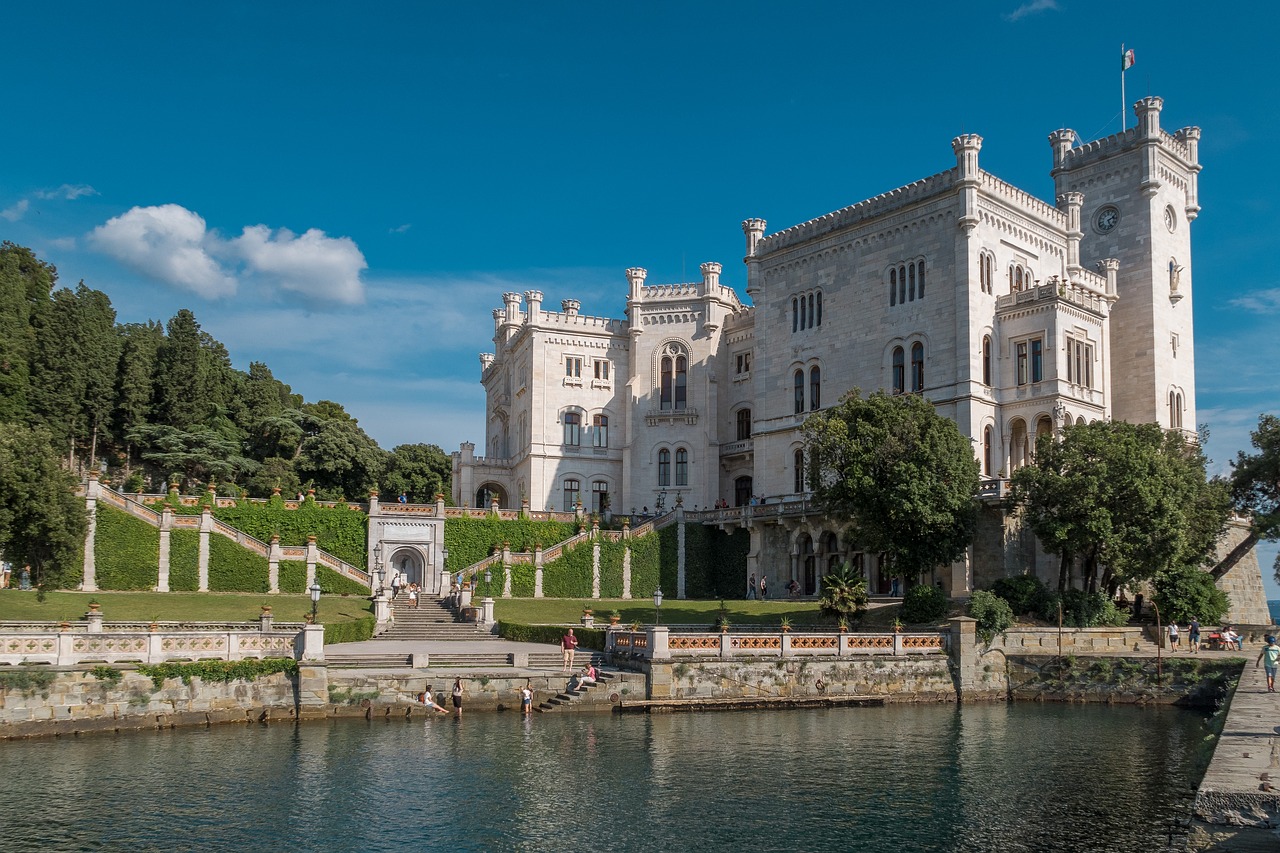Perched on Italy’s northeast border, Trieste captures my heart in every season. This unique border city blends Italian, Austrian, and Slavic influences into a fascinating cultural tapestry that changes subtly throughout the year.
The best time to visit Trieste is during the shoulder seasons of September-October or March-May. During these months, you’ll enjoy pleasant temperatures and fewer crowds while still experiencing the city’s vibrant atmosphere.

I’ve wandered Trieste’s elegant Habsburg-era squares during the hot summer months when temperatures climb to 82°F (28°C) in July and August. While beautiful, these peak months bring more tourists. For budget travelers, consider October, November, or March when prices drop but the Mediterranean climate remains mild enough for exploring the city’s stunning architecture and enjoying coffee at historic cafés.
Early spring holds a special romantic charm in Trieste as the city awakens with a pleasant Mediterranean breeze perfect for strolling along the waterfront. I love watching the Adriatic Sea sparkle under the spring sun while sipping a local wine at an outdoor café.
This border city reveals different personalities across seasons—from lively summer festivals to cozy winter retreats—making it a fascinating destination any time you choose to visit.
Exploring the Rich History and Culture of Trieste
Trieste’s unique position as a crossroads between Italy, Slovenia, and Austria has created a fascinating cultural blend that’s visible in everything from architecture to cuisine. The city’s history is deeply layered, with influences from the Habsburg Empire and its important role as a maritime trading hub.
Dive into the Crossroads of Cultures
Walking through Trieste feels like stepping through multiple European countries at once. The city’s architecture showcases this blend beautifully—from Italian piazzas to Austro-Hungarian buildings that remind me of Vienna.

The grand Piazza Unità d’Italia, facing the sea, stands as Europe’s largest seafront square. I love watching people gather here as the sun sets, with the Habsburg buildings glowing in the evening light.
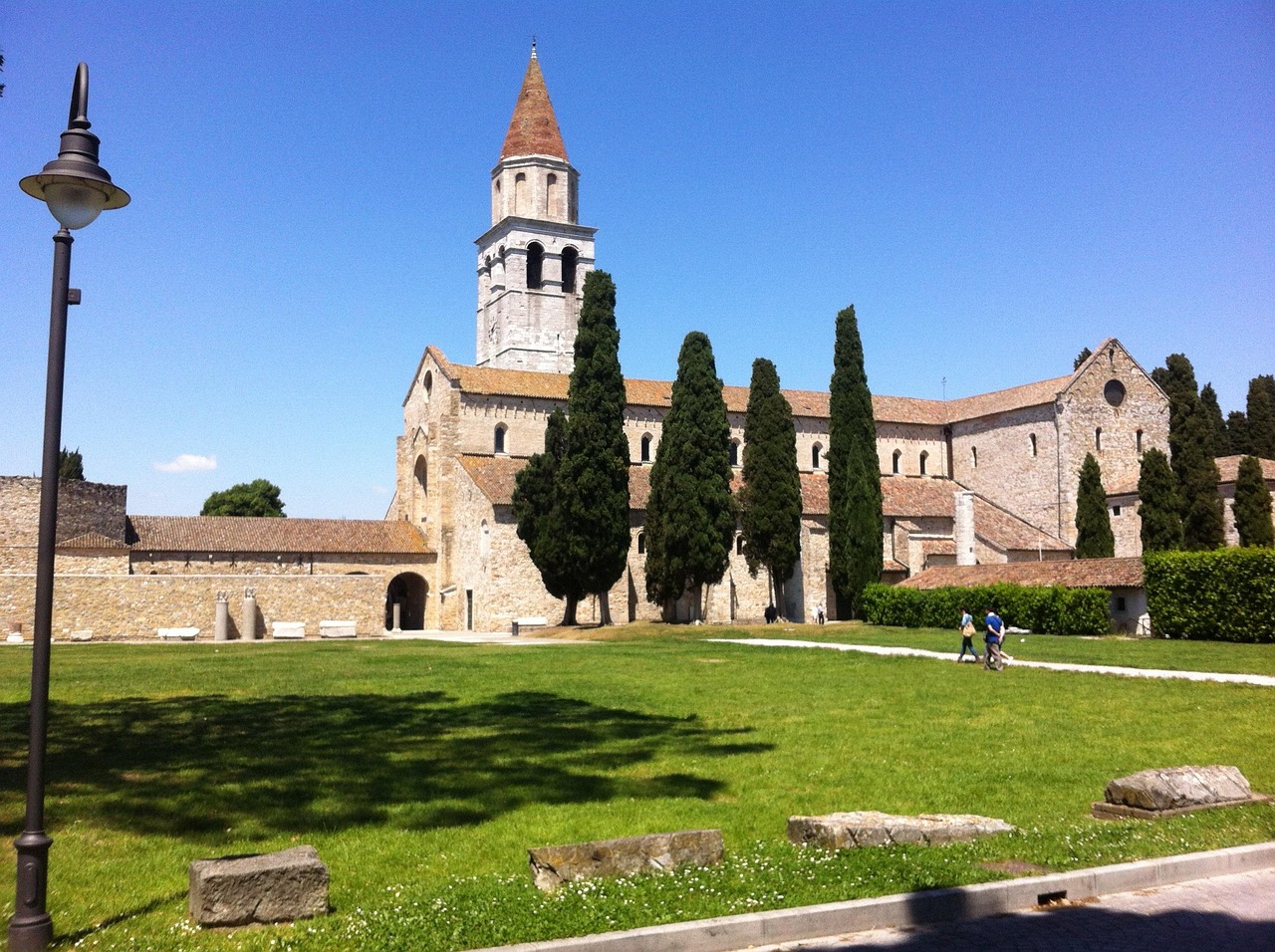
Just a short drive from central Trieste, you’ll find the ancient Roman city of Aquileia, a UNESCO World Heritage site. Its remarkably preserved mosaics tell stories of an empire that once connected this region to distant lands.
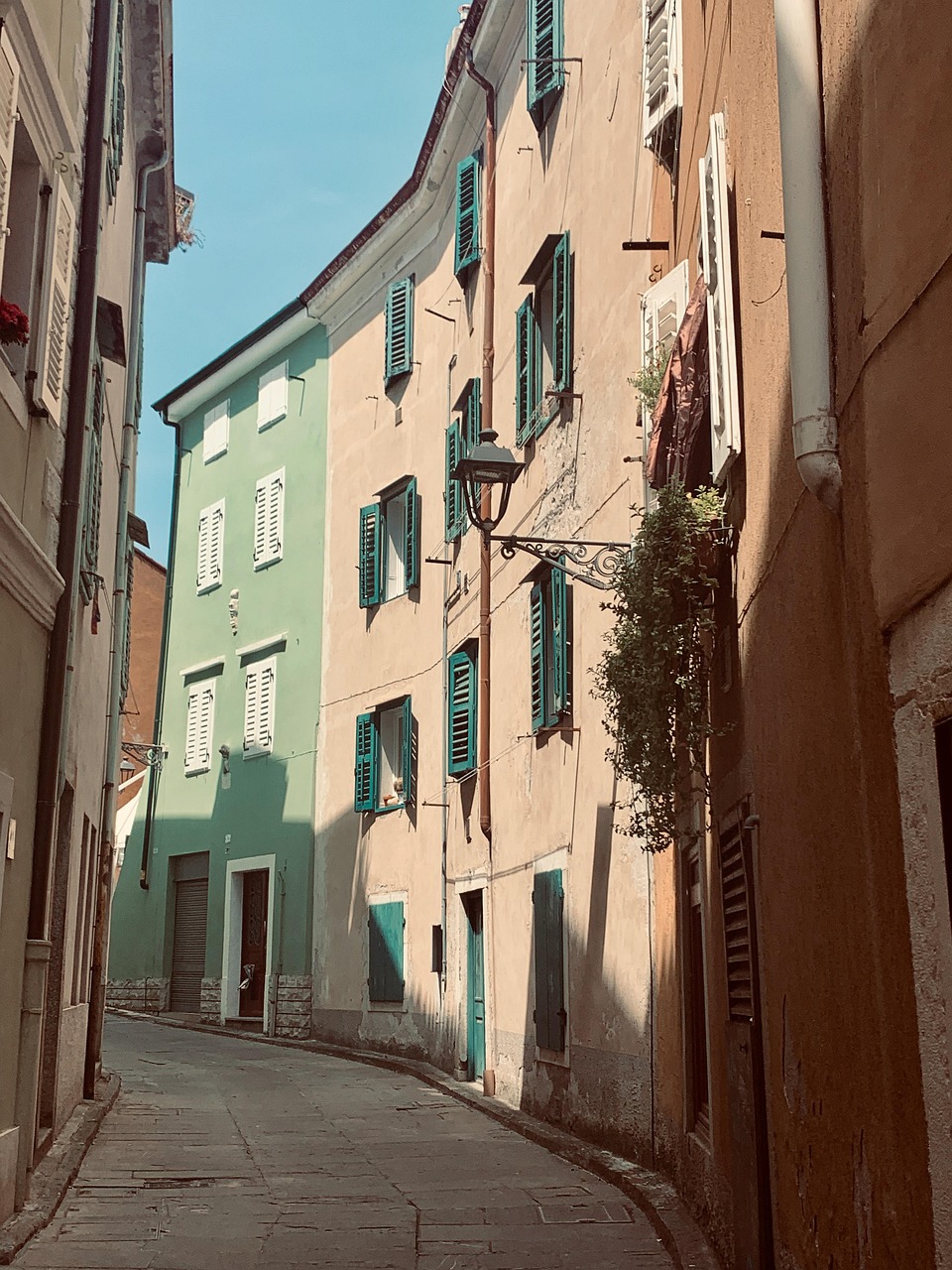
The charming fishing village of Muggia, with its Venetian influences, offers another cultural perspective. I recommend taking the ferry there to experience its colorful harbor and medieval center.
The Legacy of James Joyce and Literary Triumphs
James Joyce spent over a decade in Trieste, writing parts of his masterpiece “Ulysses” here. I often visit his statue on the Canal Grande and the historic Caffè San Marco, where he frequently worked.
The Irish writer taught English at the Berlitz School while developing his unique literary voice. His presence helped cement Trieste’s reputation as a literary haven.
You can follow the “Joyce Trail” through the city, visiting his apartments and favorite haunts. The Caffè Tommaseo, Trieste’s oldest café, was another of his regular spots.
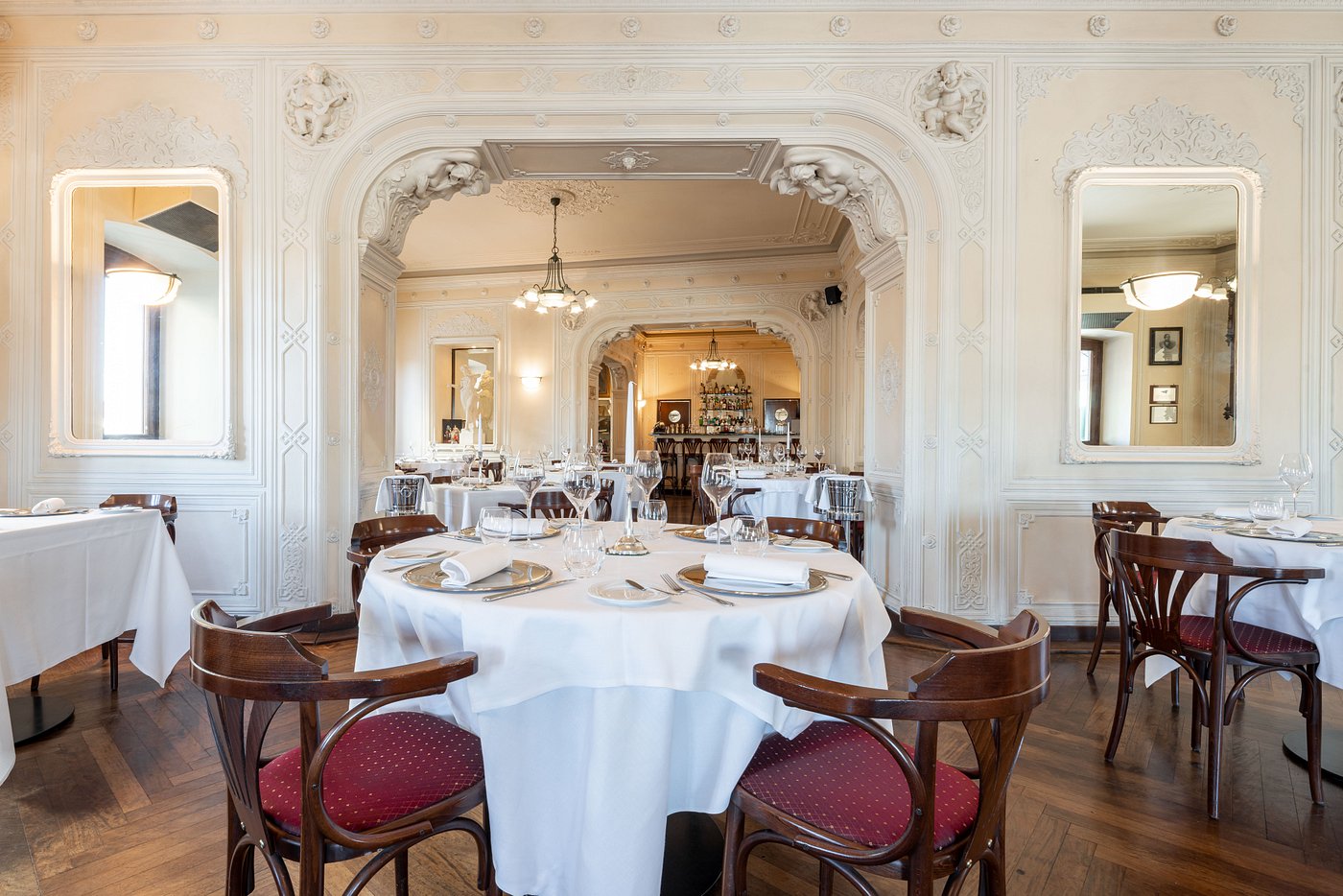
Image source: Tripadvisor
Literary culture remains vibrant in Trieste today. The city hosts numerous book festivals and literary events throughout the year, attracting writers and readers from across Europe.
Archduke Maximilian’s Influence
Archduke Maximilian of Habsburg left an indelible mark on Trieste’s landscape. His most striking legacy is the breathtaking Miramare Castle, which I believe offers one of the most beautiful seaside views in all of Italy.
Built between 1856 and 1860, this white castle perched on a rocky promontory combines Gothic, Medieval and Renaissance styles. The surrounding botanical gardens showcase exotic plants collected during Maximilian’s naval expeditions.
Not far from Trieste, the castle of Duino offers another glimpse into aristocratic life. Perched dramatically on a cliff, it inspired poet Rainer Maria Rilke to write his famous “Duino Elegies” while staying there.
Maximilian’s influence extended beyond architecture. As governor of the Austrian Littoral, he helped modernize Trieste’s port facilities, contributing to the city’s golden age as a thriving commercial center.
Trieste’s Seasonal Charm: Best Times to Visit
Trieste offers unique experiences through all four seasons, with each bringing its own special character to this border city overlooking the Adriatic Sea.
Spring Blossoms and Literary Festivals
Spring transforms Trieste into a colorful paradise. From mid-April to mid-June, I find the weather perfect for exploring the city on foot with temperatures hovering around 65-75°F (18-24°C).
During my last spring visit, the Miramare Castle gardens were bursting with colorful blooms – a photographer’s dream! This is when locals return to the Pedocin, Trieste’s unique beach known for its gender-separated swimming areas, though the water might still be chilly.
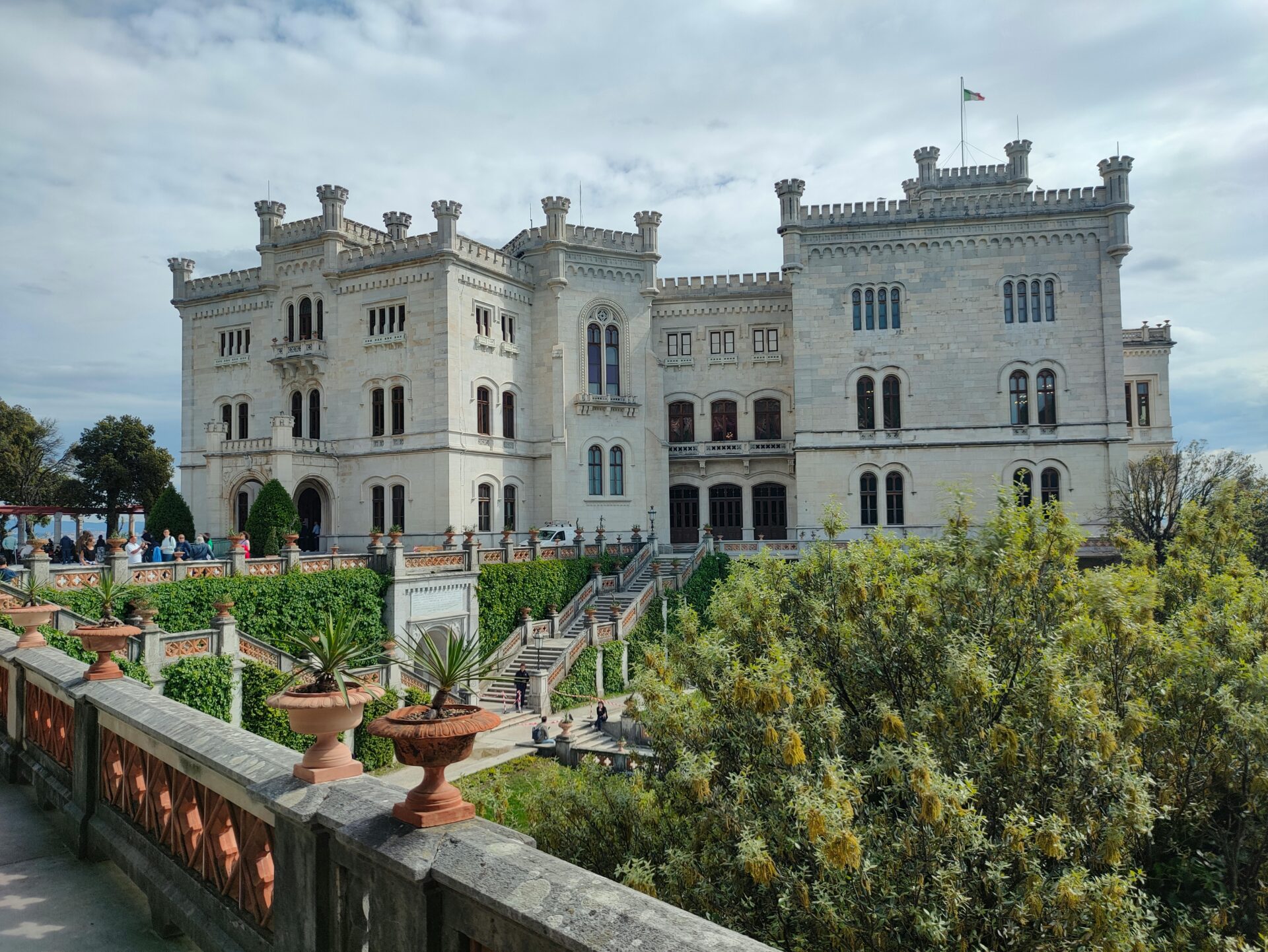
Literary festivals flourish in spring, honoring Trieste’s rich literary heritage. I particularly love attending Bloomsday celebrations, which commemorate James Joyce’s time in the city.
Spring offers an ideal balance between pleasant weather and fewer tourists compared to summer months. I’ve found hotel rates are typically 15-20% lower than peak season while still enjoying outdoor café culture.
Summer Sunshine and Seafront Escapes
Summer brings vibrant energy to Trieste’s waterfront. July and August see temperatures reach 80-86°F (27-30°C), perfect for diving into the Adriatic Sea.
I always make time for a day trip to Duino during summer. This charming castle town just outside Trieste offers stunning cliff walks with panoramic sea views. The famous Rilke Path, named after the poet who found inspiration here, is unforgettable.
Pedocin Beach becomes the social hub of the city. Unlike tourist-packed Italian beaches elsewhere, I’ve found this historic beach maintains its authentic local character even in peak season.
Evening promenades along the seafront are magical, with gelato shops staying open late. The sunset views over the Gulf of Trieste create picture-perfect moments, especially when enjoyed with a spritz from one of the waterfront bars.
Autumn Colors and Culinary Delights
Autumn might be my favorite season in Trieste. September brings wonderful weather with fewer crowds, while October and November offer budget-friendly opportunities to experience the city.
The Karst plateau surrounding Trieste explodes with fall colors, making it perfect for hiking. I recommend exploring the countryside to sample osmizas – temporary taverns where local farmers serve homemade wine and traditional foods.
This is truffle season! The restaurants around Trieste showcase these delicacies in special seasonal menus. I’ve enjoyed incredible pasta dishes featuring local white truffles that simply aren’t available other times of year.
The Barcolana regatta in October transforms the Gulf of Trieste with over 2,000 sailing boats – it’s the largest sailing race in the world and creates a spectacular sight against the autumn backdrop.
Wintertime Magic by the Adriatic
Winter brings a different charm to Trieste. The famous Bora wind can be fierce, but it creates crystal-clear days with stunning visibility across the Adriatic.
I love bundling up for winter walks along the Grand Canal, stopping at historic cafés like Caffè San Marco where intellectuals and writers have gathered for generations. The hot chocolate here is the perfect winter warmer!
Christmas markets transform Piazza Unità d’Italia, Europe’s largest seaside square, into a festive wonderland. The illuminated buildings against the winter sky create a magical atmosphere unlike anywhere else.
Winter offers the best opportunities to experience Trieste like a local. With fewer tourists, I’ve had meaningful conversations with residents in cozy wine bars and discovered hidden gems I might have missed during busier seasons.
A Traveler’s Guide to Trieste’s Landmarks
Trieste’s unique border city charm comes alive through its remarkable landmarks that tell stories of its Latin, Slavic, and German cultural influences. The city offers visitors an array of architectural wonders that showcase its rich and complex history.
Must-Visit Historical Sites
When I arrived in Trieste, I was immediately struck by the Piazza Unità d’Italia, Italy’s largest seaside square. The impressive government buildings surrounding it create a majestic atmosphere that’s especially beautiful at sunset.
Miramare Castle deserves special attention. This gleaming white castle sits on a rocky promontory overlooking the Adriatic Sea, just a short bus ride from the city center. Built for Archduke Ferdinand Maximilian of Habsburg in the 1850s, the castle features opulent interiors and lush gardens.
The Roman Theater, dating back to the 1st-2nd century AD, offers a glimpse into Trieste’s ancient past. It’s tucked away in the old town, and I was amazed to find such a well-preserved structure nestled between modern buildings.
Duino Castle: A Cliffside Wonder
Perched dramatically on a karst cliff about 10 miles northwest of Trieste, Duino Castle captivated me with its breathtaking views of the Gulf of Trieste. This 14th-century fortress has welcomed illustrious guests throughout history, including Dante and the poet Rilke.
The Rilke Path, named after the poet who found inspiration here, runs along the cliffs near the castle. Walking this trail, I enjoyed both natural beauty and literary significance.
The castle’s interior reveals aristocratic life through the centuries with its furnished rooms, family portraits, and ancient artifacts. The private chapel and bunker from WWII particularly stood out during my visit.
Don’t miss the ancient ruins of the Old Castle nearby – they add another layer to this historic site’s appeal.
The Grandeur of Canal Grande
Unlike its famous namesake in Venice, Trieste’s Canal Grande is a smaller but equally charming waterway cutting into the heart of the city. Built in the 18th century, it allowed merchants to unload goods directly into the Borgo Teresiano district.

I spent a delightful morning at the canal, admiring the colorful buildings and the elegant Ponte Rosso (Red Bridge). The Chiesa di Sant’Antonio Taumaturgo stands majestically at the canal’s end – locals call it Sant’Antonio Nuovo.
The surrounding area features numerous cafés where I enjoyed Trieste’s famous coffee culture. James Joyce once frequented these establishments during his time in the city.
Small boats bob gently in the canal waters, creating a peaceful atmosphere despite being in the city center. The canal is particularly magical during evening hours when lights reflect on the water.
Discovering the Culinary Landscape of Trieste
Trieste’s food scene blends Italian traditions with influences from the Balkans, Central Europe, and the Adriatic Sea. The city’s position at the crossroads of cultures creates a unique gastronomic identity unlike anywhere else in Italy.
The Flavors of Istria
When I wander through Trieste’s markets, I’m always struck by the Istrian influences that dominate the local cuisine. Olive oil is the fat of choice here, replacing the butter commonly used in northern Italian cooking.
The proximity to the sea ensures fresh seafood takes center stage. I love ordering the local brodetto (fish stew) which varies daily depending on the morning’s catch. The hearty jota, a bean and sauerkraut soup, reflects the Slavic influence that’s so prevalent here.
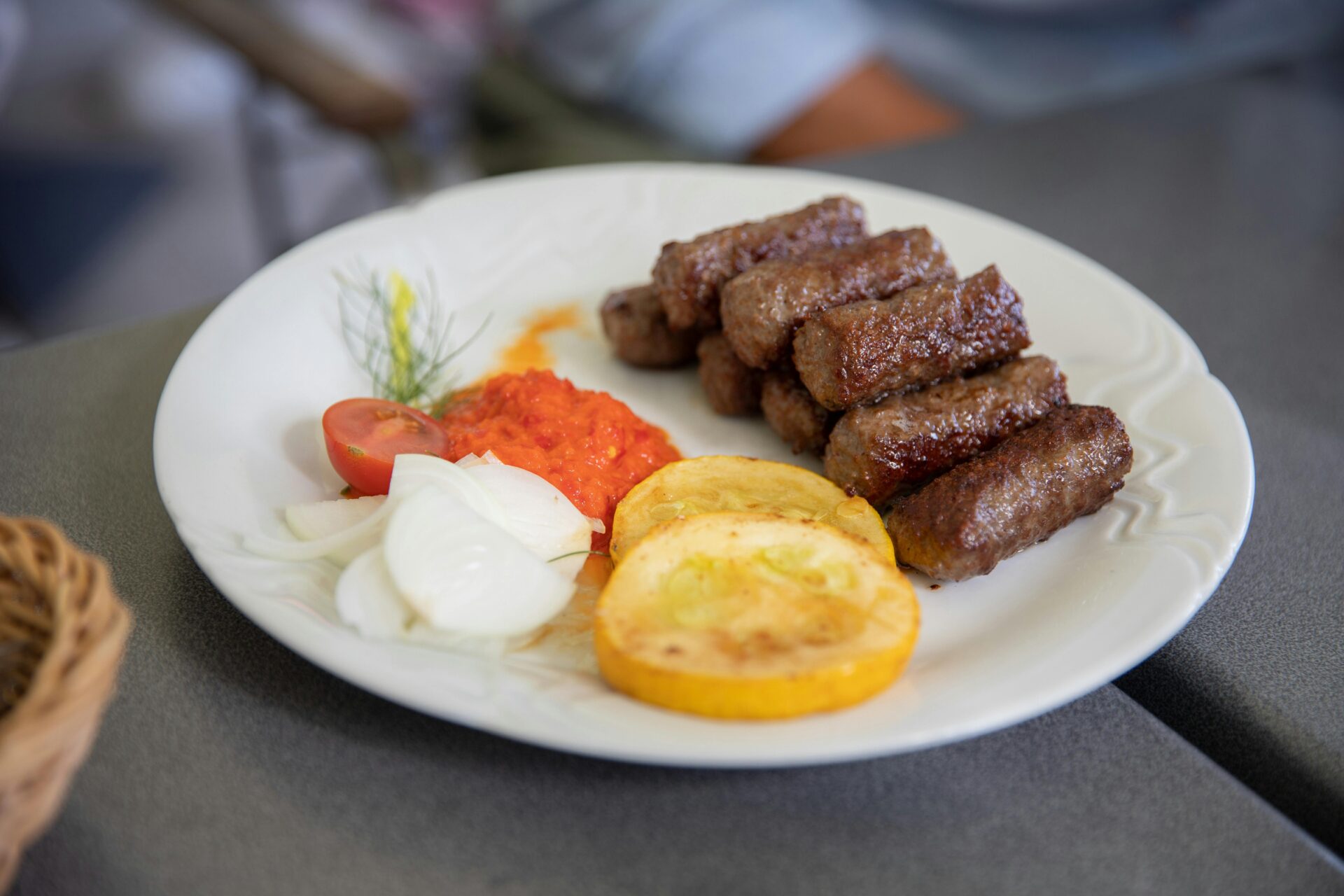
Trieste’s position near the Carso plateau brings wonderful prosciutto and aged cheeses to the table. Don’t miss trying frico, a crispy cheese dish, or cevapcici, grilled minced meat sausages that showcase the Balkan influence.
Trieste’s Unique Coffee Culture
Coffee isn’t just a beverage in Trieste—it’s an institution. The city’s historic connection to the Habsburg Empire created a coffee culture that rivals Vienna’s.
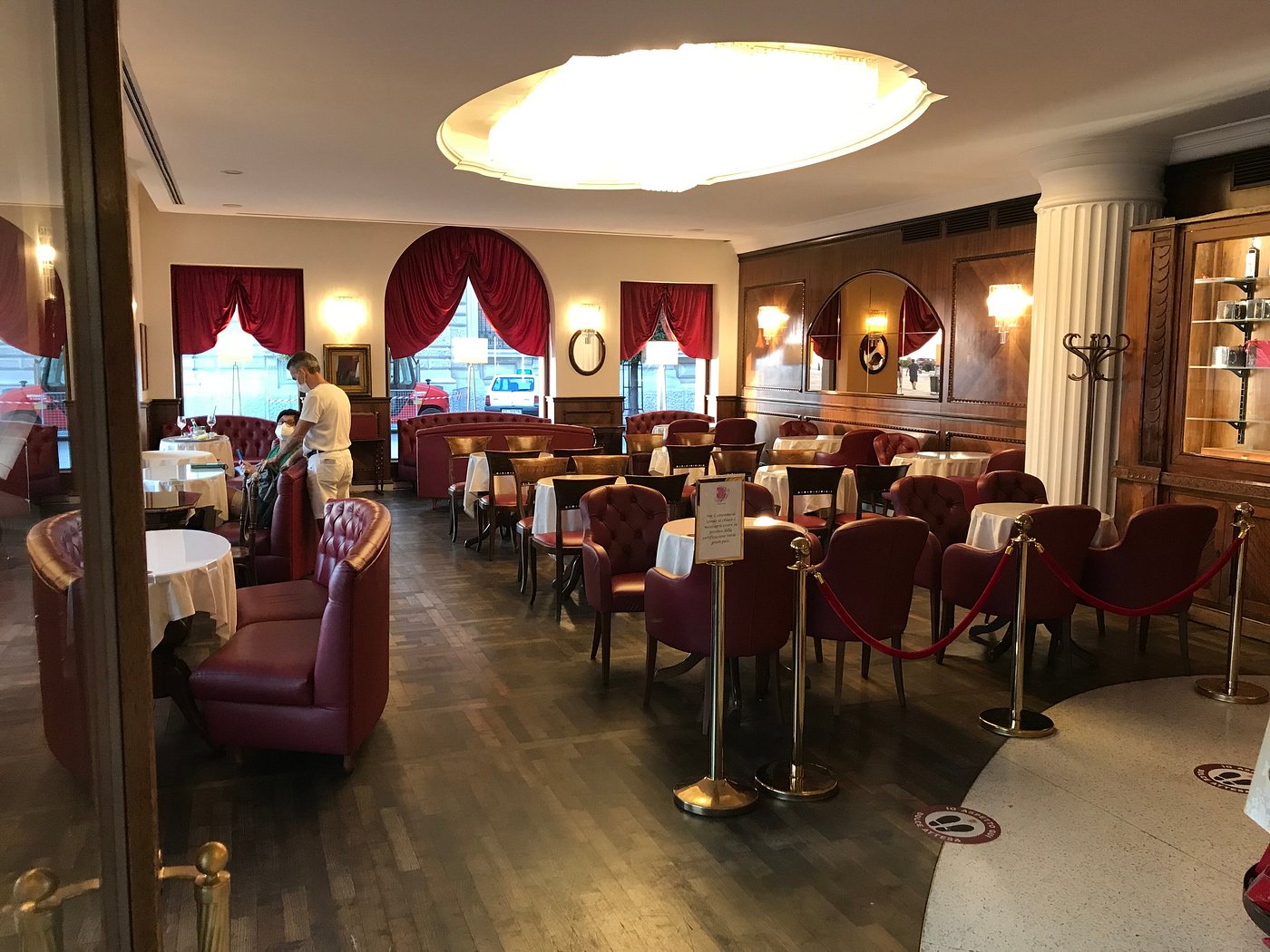
Image source: Tripadvisor
I start most mornings at one of Trieste’s historic cafés like Caffè San Marco or Caffè degli Specchi. The locals have their own coffee vocabulary that puzzled me at first. If you order a “capo in b,” you’ll get a small cappuccino in a glass.
Trieste’s coffee credentials run deep—it’s Italy’s coffee capital and home to the famous Illy brand. The city imports, processes, and ships coffee beans from around the world. Many cafés roast their own beans, creating distinctive blends.
The coffee ritual here includes reading newspapers while sipping espresso at marble tables. It’s slower and more deliberate than the quick coffee bars of Rome or Milan. This tradition dates back to when Trieste was the Habsburg Empire’s main port.
Day Trips and Nearby Adventures from Trieste
Trieste’s strategic location makes it perfect for exploring breathtaking destinations in Italy and neighboring countries. The city serves as an ideal base for venturing into charming coastal towns, historic sites, and even crossing borders for new cultural experiences.
The Charms of Muggia and Aquileia
Just a short boat ride south of Trieste lies Muggia, a delightful fishing village with Venetian influences. I love wandering through its narrow medieval streets and colorful houses that create a completely different atmosphere from Trieste.
The main square, Piazza Marconi, offers charming cafés where I often enjoy a cappuccino while watching locals go about their day. Don’t miss the 13th-century Duomo with its Gothic-Venetian style.
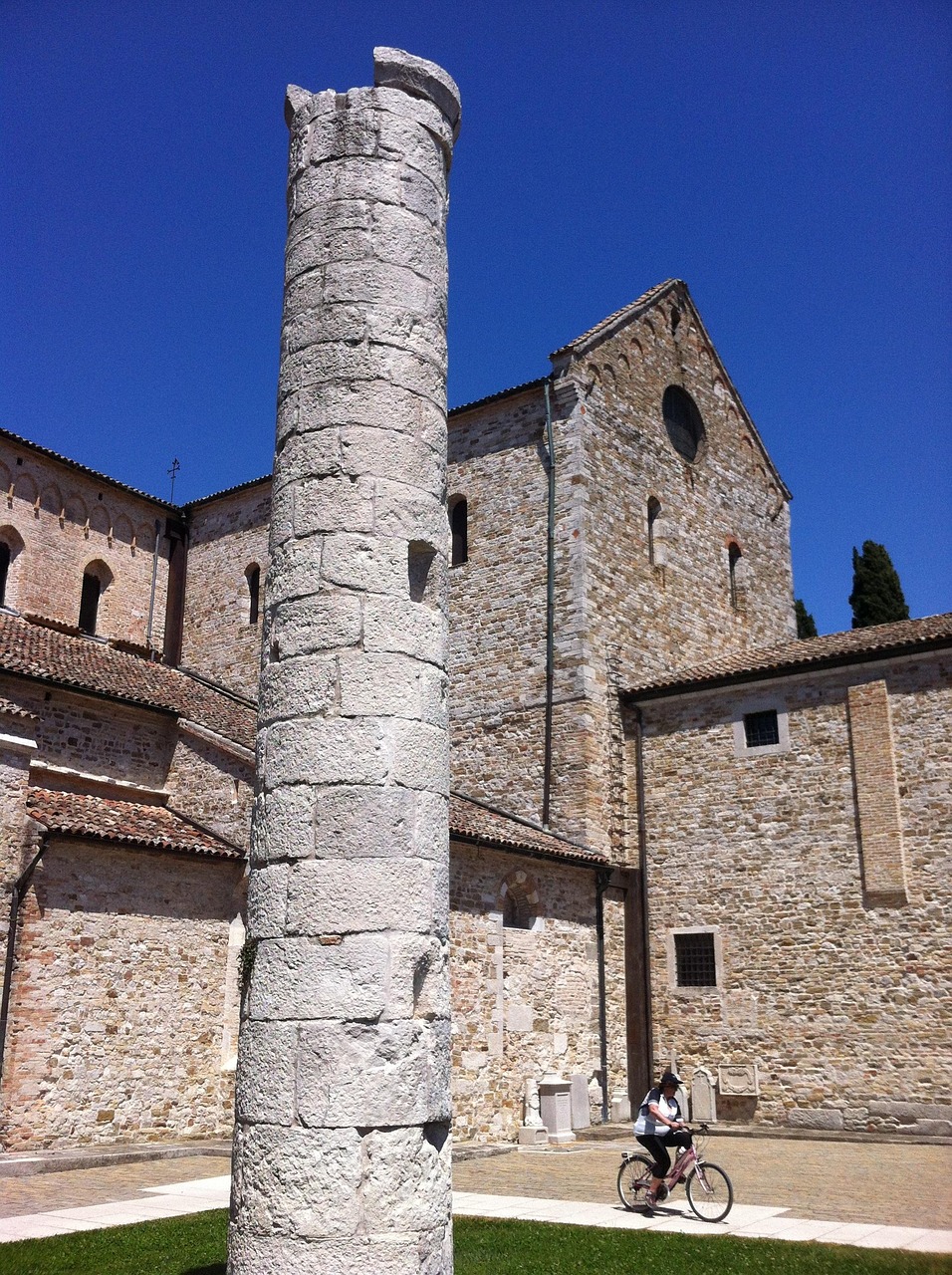
For history buffs, Aquileia is a must-visit UNESCO World Heritage site about an hour’s drive from Trieste. The remarkable Roman ruins and stunning Byzantine mosaics in the Basilica tell stories of this once-important Roman city.
The archaeological area reveals ancient Roman streets, a forum, and river port that transport you back in time. I recommend hiring a local guide to fully appreciate the historical significance of this exceptional site.
Istrian Peninsula Excursions
The Istrian Peninsula offers some of my favorite day trips from Trieste. This heart-shaped peninsula extends across Italy, Slovenia, and Croatia with picturesque hilltop towns and coastal gems.

Top Istrian destinations from Trieste:
- Piran (Slovenia): Medieval walled town with Venetian architecture
- Porec (Croatia): Famous for the 6th-century Euphrasian Basilica
- Motovun (Croatia): Perched dramatically on a hilltop
- Pula (Croatia): Home to one of the best-preserved Roman amphitheaters
I particularly enjoy visiting the olive oil and truffle producers scattered throughout the countryside. The region’s culinary traditions blend Italian, Slavic, and Central European influences to create unique flavor profiles.
The coastal drive along the peninsula offers breathtaking views of the Adriatic Sea. Summer visitors should pack swimwear as the crystal-clear waters are perfect for a refreshing dip during your explorations.
Across the Border: Slovenia and Ljubljana
Slovenia’s proximity to Trieste makes it perfect for day trips. Ljubljana, Slovenia’s charming capital, is just about 90 minutes by car or train from Trieste.
The car-free city center of Ljubljana features beautiful bridges spanning the Ljubljanica River. I always spend time at the central market and enjoy a coffee at one of the riverside cafés along the embankment.
Ljubljana Castle offers panoramic views of the city and surrounding mountains. The blend of Baroque, Art Nouveau, and modernist architecture creates a fascinating visual tapestry throughout the city.
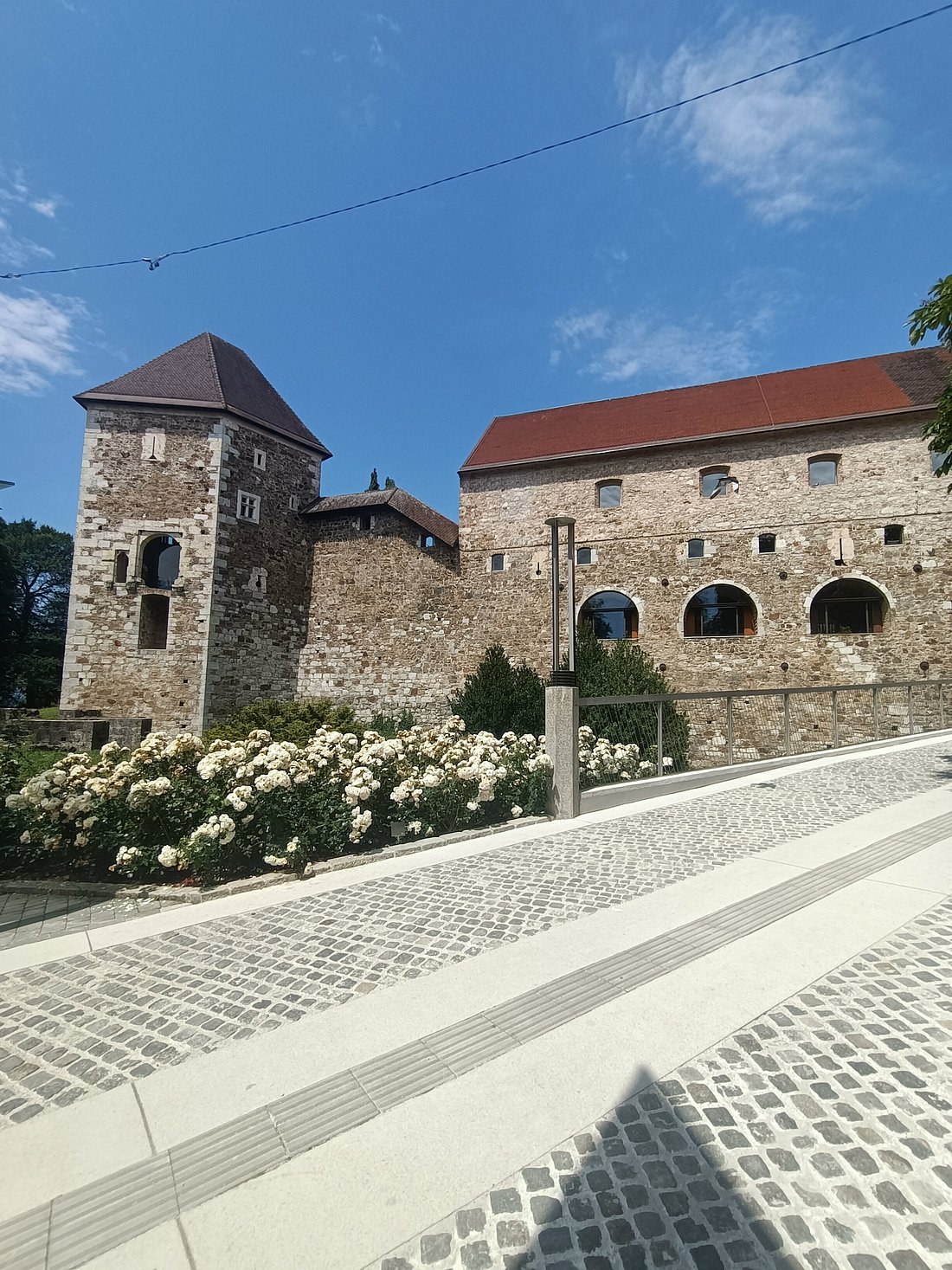
For nature lovers, Lake Bled is slightly farther but absolutely worth the journey. The emerald-green lake with its island church and clifftop castle creates one of Europe’s most iconic landscapes. In winter, I recommend combining Ljubljana with a visit to Tarvisio for some excellent skiing in the Julian Alps.
Seeking Serenity in Rovinj
Rovinj stands out as my #1 summer day trip recommendation from Trieste. This former Venetian outpost on Croatia’s Istrian coast captivates with its old town peninsula, narrow cobblestone streets, and artistic atmosphere.
The Church of St. Euphemia dominates the skyline with its bell tower offering spectacular views of the red-tiled rooftops and azure Adriatic Sea. I like to arrive early to avoid crowds and watch fishermen bring in their morning catch.

The town’s connection to art is evident in the numerous galleries and studios tucked away in stone buildings. Local artists often display their work along the harborfront promenade.
After exploring the old town, I recommend spending time at one of the nearby beaches. You can also take a boat tour to the stunning Lim Fjord.
Seafood restaurants along the harbor serve fresh catches of the day that perfectly complement the local Malvasia wine.

